How do you know your patio builder won’t cut corners and install an inferior patio at your home? The best way to ensure your new patio is built with our high standards is to use Archadeck of NE Dallas-Southlake for the job. Whether you want to add a paver patio or stain and stamp concrete, the quality of your new patio depends on its foundation. We’d like our clients (and potential clients) to understand why this matters.

Homeowners contracting for a new patio may not give a great deal of thought to the patio’s foundation. It’s only natural that many clients will be more interested in their patio’s appearance. From the custom patio design to the finished, ready-to-enjoy patio itself, you want to know it’s going to look great. On the other hand, some homeowners are quite interested in learning more about how well-built Archadeck’s projects are. This article is for you!
What sets our patio foundations apart from those of other Dallas-area patio builders? Let’s look at some of the details that make a difference.
High-quality Foundation for a Stain and Stamp Concrete Patio
The first consideration is whether a new patio is going to have an additional structure resting on it. When we build a structure where something will rest atop the patio floor, we install a grade beam system as part of the foundation. If you interview a builder who says they will just pour the typical 4" concrete slab with traditional footers, don’t waste time talking with them.
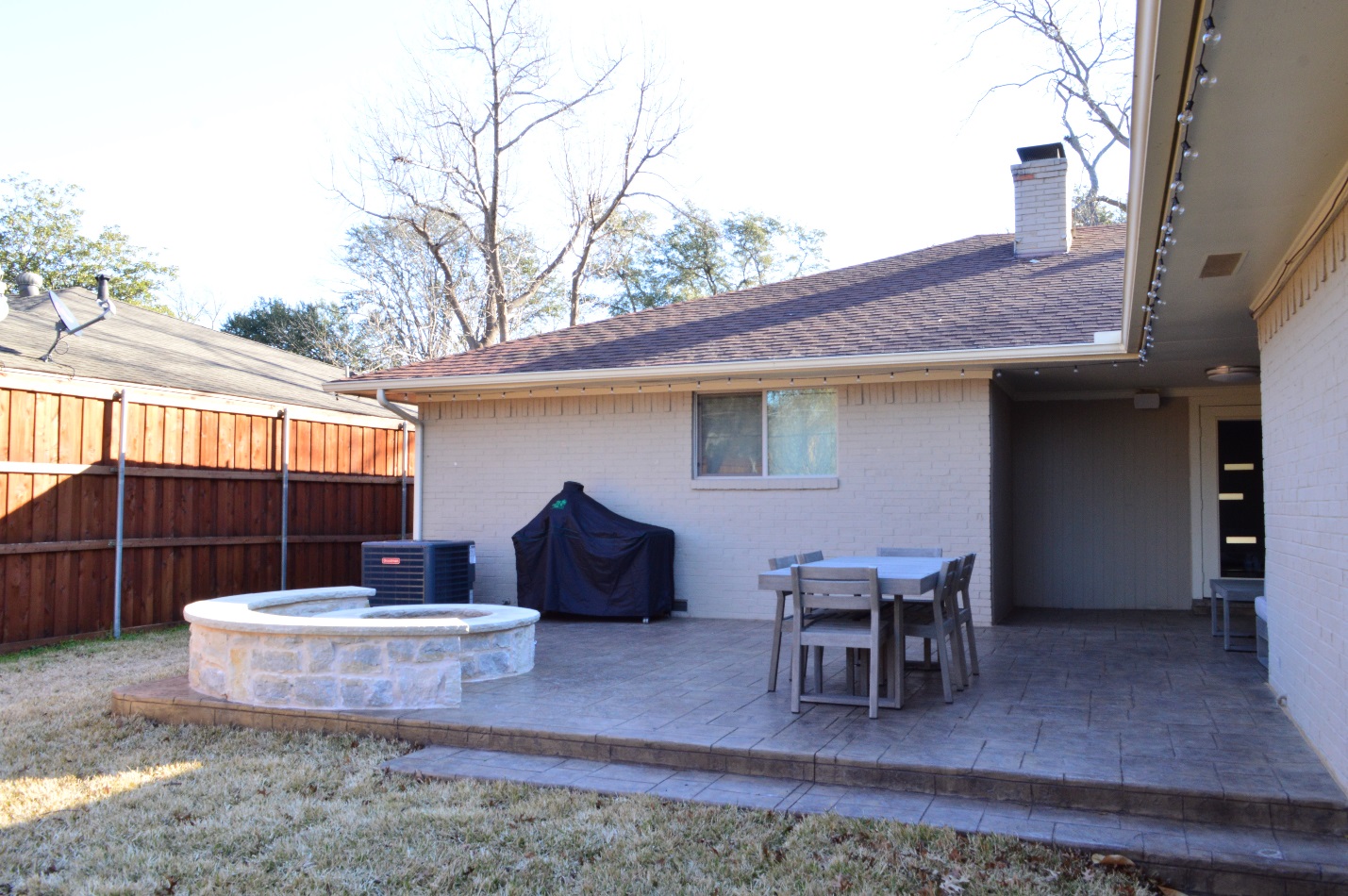
Using grade beams in the patio foundation is especially important here in the Dallas area because of our black clay soil. In many cases, the soil itself will not have the load-bearing capacity needed for a project’s anticipated design loads.
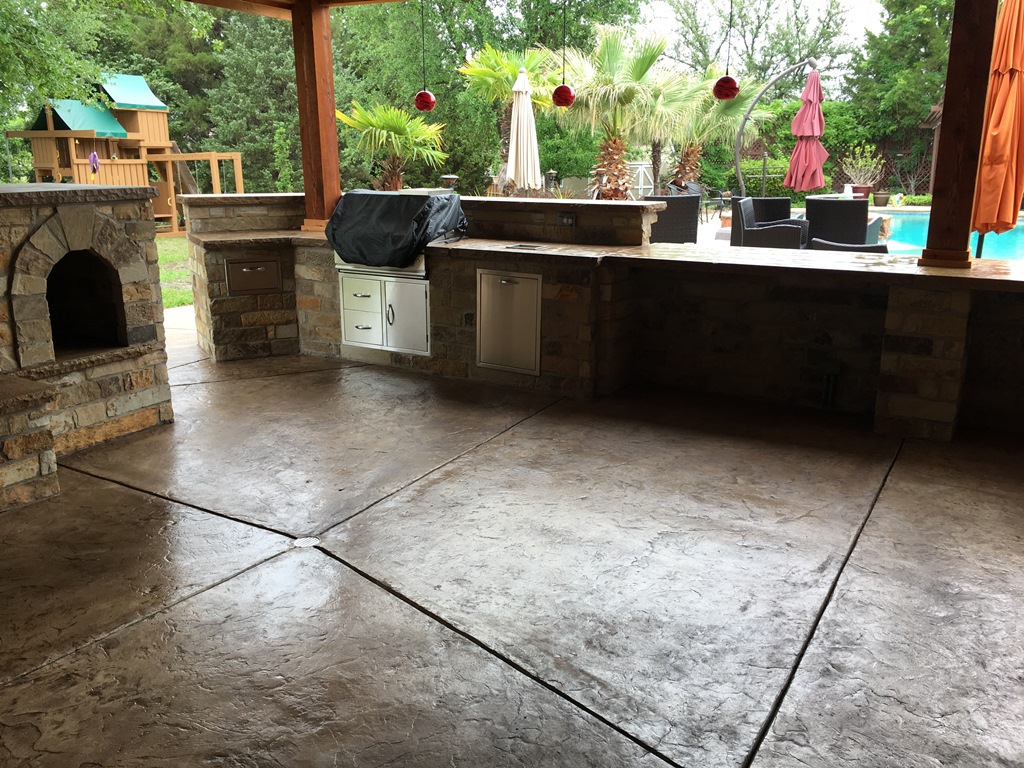
Grade beams are also called grade beam footings. They are made of reinforced concrete, and they’re not something we bring in to the job site. We excavate to dig trenches, build forms down in the trenches and pour concrete into the forms. That reinforced concrete becomes the grade beam system. Archadeck installs grade beams 24" deep with rebar and footers at a minimum of 30" deep. This is protocol with any foundation upon which something will be built.
These reinforced concrete beams transmit the load from the structure above down to spaced foundations below, for example, to pile caps or caissons. This process ensures the patio is structurally sound. Our competitors who don’t use a grade beam system are cutting corners to save a few dollars. That practice can lead to problems down the road, especially given the soil conditions in this area. The result could be a cracking patio and shifting rooflines. No homeowner wants to see either of those develop! A structural engineer would require a foundation to include a grade beam system in order to sign off on it with a Texas Structural Engineer stamp.
What Else Makes Archadeck’s Patio Foundations Superior?
You may be familiar with the term PSI, or pounds per square inch. Our standard for a patio foundation is 3500 PSI – the same PSI used for home foundations, driveways and roads. Our competition does not meet this standard. PSI is more accurately described as “pound-force per square inch,” and it is a unit of pressure or stress. One PSI would be the pressure from one pound-force as it is applied to one square inch of area. The difference is strength, and a lot of other builders use weaker concrete than 3500 PSI. When you pour concrete, it always weakens, so we make sure our concrete starts out strong.
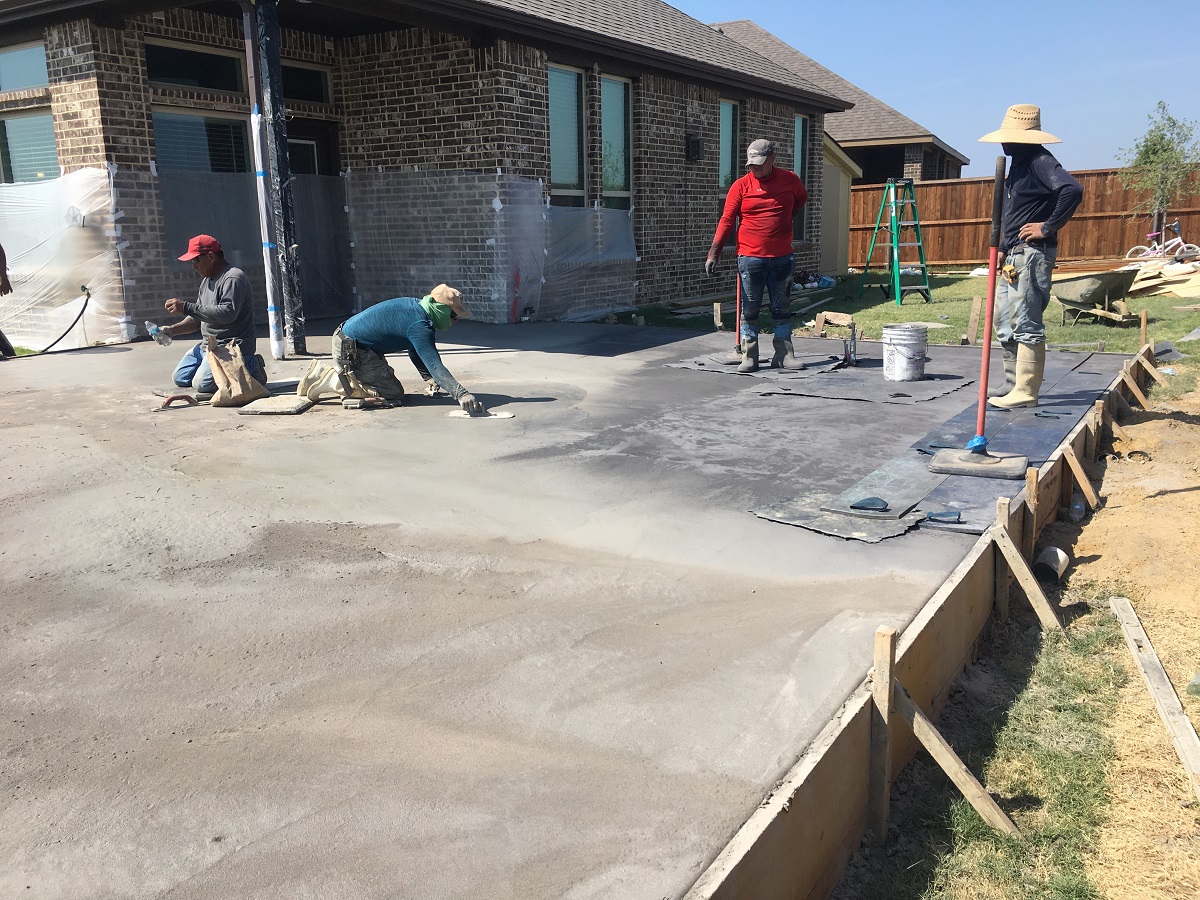
At Archadeck of NE Dallas-Southlake, we also use doweling whenever we build a new concrete pad next to an existing pad. Specifically, we use a #3 dowel (rebar) placed 16” off center. The typical example would be to increase the size of an existing patio. Instead of demolishing the existing concrete pad, we may leave it in place and pour the additional square footage next to it as an extension. Doweling prevents movement of the patio over time. Without doweling, the new pad is free-floating, and a ground shift could open up the seams between the old and new concrete pads.
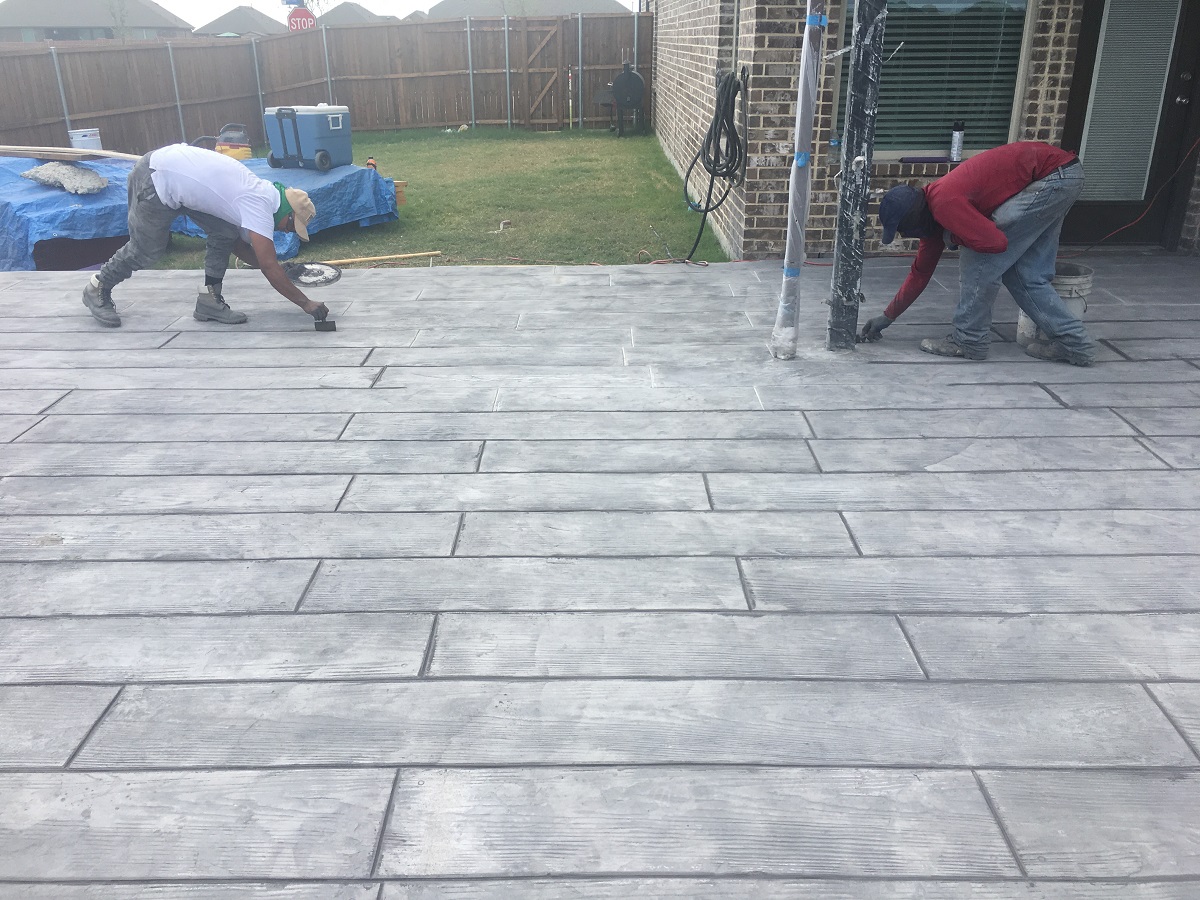
The way we seal our stain and stamp patios is another prime example of how we achieve a higher level of quality. Instead of using a spray sealer, we use a roll sealer for a thicker application that will last longer between sealings. In addition to increasing longevity, using a roll sealer increases a patio’s color endurance. This is especially significant for a stain and seal patio in direct sunlight or near a pool, where it will require sealing more often.
We Take Extra Steps for Quality When We Build Paver Patios, Too
Paver patios are extremely popular in the Dallas area, too, especially Belgard or travertine pavers. When building a paver patio, we excavate 6" below grade, or 6” below the point that we are leveling up to. We backfill the area with 5.5" of road base stone, which is compacted every 3 feet. Then we top this base with an inch or half inch of sand to level it off. We arrange the pavers on this prepared surface and then use polymeric sand in the joints to finish. We follow the same protocol for flagstone patios, too. The exception would be a situation where we install a concrete patio first and then lay the flagstone on it, which is also an option.
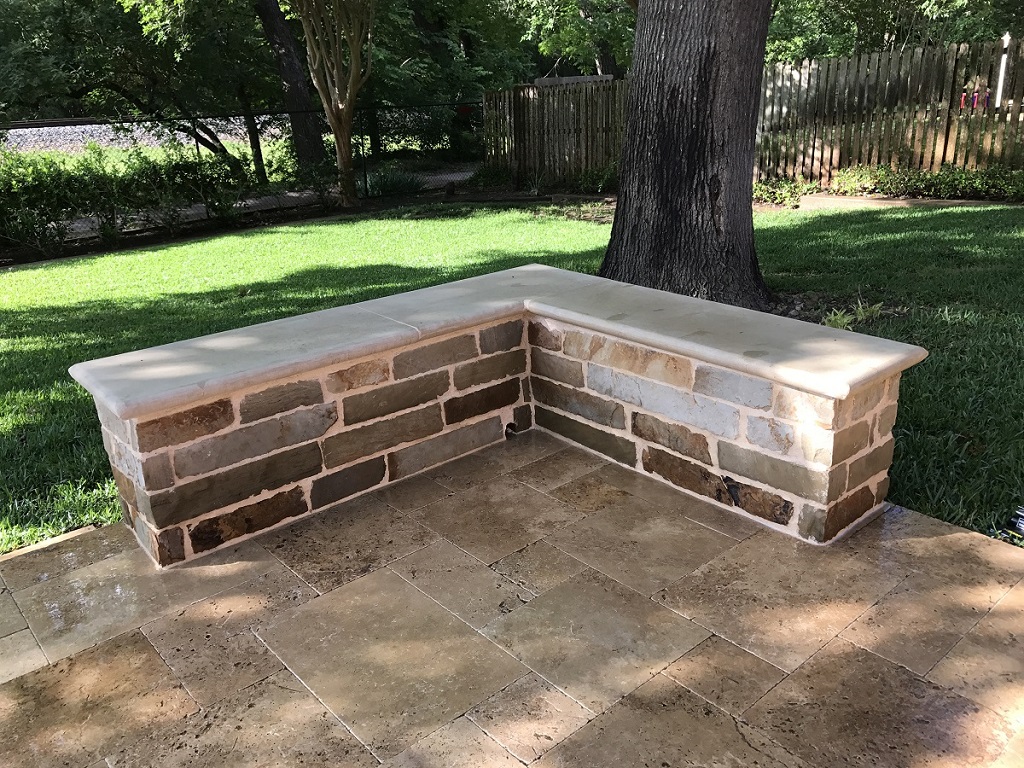
Archadeck is known for expert craftsmanship and high construction standards. You’ll find these qualities in all of the projects we design and build, from decks and porches to covered or uncovered patios. These high standards set us apart from our competitors. With Archadeck’s attention to detail and our focus on process, you can count on us to deliver a superior product every time.
Are you ready to add the perfect patio to your home or increase size of the outdoor living space you already have? Archadeck of NE Dallas-Southlake has you covered! Contact us today to schedule your design consultation.

Agustin & Amanda Garza, Owners of Archadeck of NE Dallas-Southlake.